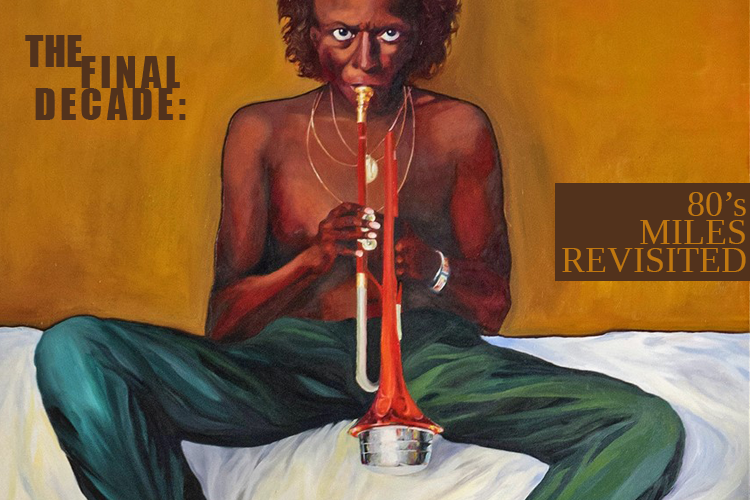Miles Davis: The Final Decade Revisited, Introduction
|
Getting your Trinity Audio player ready...
|
On September 28, 1991, the world lost a musical giant. An artist who, by his own estimation, changed the face of music five or six times. Miles Davis.
During the mid-1940s, Miles was a sideman for one of history’s great compositional innovators, Charlie Parker. He would follow it up by playing a significant role in developing a relaxed and lighter-sounding style with Birth of the Cool (Columbia, 1950). With the First Great Quintet, the trumpeter explored modality while leading other legendary artists, including John Coltrane. Collaborations with Gil Evans brought an interplay between rich orchestral colorings and impassioned horn playing. And, of course, there is one of the most well-received albums of all time, Kind of Blue (Columbia, 1959). With the Second Great Quintet, Miles began pushing the outer edges of chordal structures, particularly on compositions penned by Wayne Shorter. By the late 1960s, Davis set his sights towards narrowing any gap between rock and jazz. From minor flirtations with electric sounds on Filles de Kilimanjaro (Columbia, 1969) to the psychedelic jazz-rock masterwork of Bitches Brew (Columbia, 1970) and then “the most hated album,” the bandleader continued to push his sound further and further out. And, in the process, he planted the seeds for countless other music to come, including ambient, techno, hip hop, post-punk, and electronica. While listeners may prefer a particular era over another, very few have questioned the importance of Miles’’ work up until 1975. But the time before his retirement is only part of the story.
By 1981, the maestro returned to music-making after a five-year hiatus. And, as has been the case throughout his chameleonic career, Miles pulled the music in new directions using younger colleagues. Far too often, critics disliked his new paths. Some have used words and phrases like “sellout,” “a shadow of his former self,” and “purely commercial” to describe Miles’ work from the era. In the decades since, several critics have begun to re-examine their aversion to his output from the period. But, to some degree, many still view the music from the last ten years of his life – with the possible exception of Tutu (Warner, 1985) – as some sort of footnote.
The thirtieth anniversary of Miles’ death and the fortieth of his return to music seems like an opportune time to questions this mindset. With this ongoing series, we will provide more thorough analyses of Miles’ albums during the final decade of his life and various interviews with those who worked on them. It is hoped these discussions will spur listeners to question their preconceptions about the period. Instead, one will find sounds not made for primarily commercial appeal but to forward new ideas. Ensembles that helped launch the careers of some of today’s most significant artists. Music with a legacy that is still, to some degree, being developed and explored.
Painting by Fikay Marie based on the cover photo by Annie Liebowitz of “Doo-Bop.”

